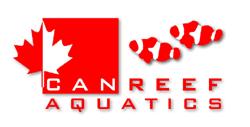
 |
|
|
|
#1
|
|||||
|
|||||
|
Quote:
Last time I tried designing my own DC amplifier for the field winding of an AC generator it looked like crap, worked but burnt out in about 30 seconds... Hence why i'm not an electronics engineer. something like this would work, http://www.omega.com/ppt/pptsc.asp?ref=CDTX90 I would need the transmitter for $620 plus probe $320... just a wee bit iver the budget, there must be a more economical transmitter out there. Last edited by Seth81; 11-19-2012 at 07:39 PM. |
|
#2
|
|||||
|
|||||
|
Yeah you could pick up a full aquarium controller for that, might be an option although I get the idea behind building your own controller but at the same time kind of seems like reinventing the wheel a little.
|
|
#3
|
|||||
|
|||||
|
Have you taken in account the calcium bicarbonate precipitation that will occur with highly elevated levels of both calcium and HCO3-?
I have a feeling your pump would kick out on you in the span of a day with that much abiotic precipitation. Quoted from Randy Holmes-Farley here: Quote:
|
|
#4
|
|||||
|
|||||
|
For what it's worth the last system I used the saturated approach I outline before had a 29 gallon tank for the salt tank, with the overflow installed it probably only held just over 20 gallons of water. I use to fill it with a full box of reefers best salt. So 20 kgs of salt to 20 gallons of water, never had a precipitation issue.
|
|
#5
|
|||||
|
|||||
|
Quote:
The article you cited is very interesting, I think it is relating more to how Ph effects saturation levels. I would think in my proposed setup, that once the saturated saltwater hits the RO water in the SW tank some amount of time and mixing would be required before the water should be used in the display tank. Which I have no problem with... I could program the SW tank to be filled with a mix of RO and SSW say a day or two before the scheduled water change. I did find a yokogawa transmitter on ebay for $65 that accepts most standard probes. Last edited by Seth81; 11-19-2012 at 08:15 PM. |
|
#6
|
|||||
|
|||||
|
Hmmm, I was more leaning towards the point that the calcium bicarbonate would precipitate onto the impeller itself causing dysfunction.
I must be wrong if Steve had no problems with abiotic precipitation via supersaturation though. |
|
#7
|
|||||
|
|||||
|
I just didn't have issues with what I was doing, using different volumes or salt might change things. I know precipitation will occur eventually at some point, I just never reached that point.
|
|
#8
|
|||||
|
|||||
|
Sounds like its time for a science experiment
|
|
#9
|
|||||
|
|||||
|
Well I doubt it would be a problem for most pumps, but to be sure a positive displacement pump (such as a dosing pump) could be used to guarantee that precipitate wouldn't be an issue. Which would also help to ensure a good slow mixing of the solutions too. BRS sells a 50 ml/min dosing pump, based on a 7:1 ratio of RO to SSW water the dosing pump would need to be on for 3.5 hours to make up 20 gallons, which isn't too bad I think.
|
|
#10
|
|||||
|
|||||
|
Dosing pumps clog up from participate all the time, it really doesn't take much. Even if you get participate I don't think a standard centrifugal pump will have any issues. Another idea is to eliminate the pump in the saturated tank and add an overflow from the saturated tank to the saltwater tank. To add saturated solution to the SW tank you pump water from the RO to the saturated which in turn overflows into the SW tank. Use a small power head in the saturated tank to keep things moving. Similar to what posted before except the sump is another holding tank for additional mixing prior to being moved into the aquarium, personally I still don't see the need for the extra step but these types of systems have to make sense to the owner more than anyone else.
|